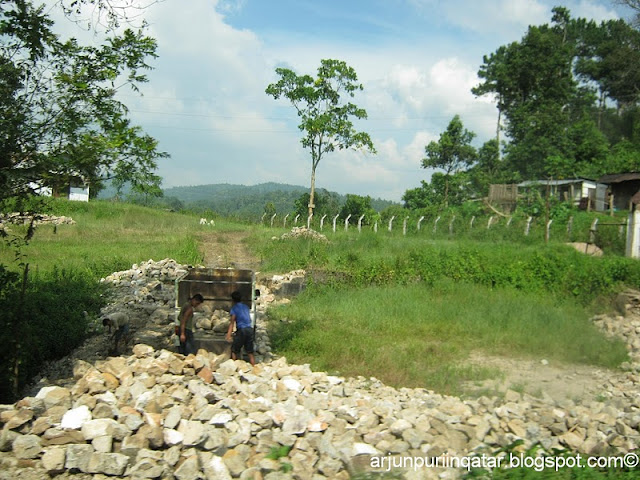Meghalaya means ‘the abode of clouds’ and you should see it to believe it, and you are left speechless but to say, yes it is the place as abode of clouds! Meghalaya is one of the Seven Sister States of India. Shillong also known as the Scotland of the East is the capital of Meghalaya. The state, a hilly strip in the eastern part, is bounded on north by Assam and by Bangladesh on the south. It was bifurcated from Assam in 1972 and the districts of Khasi, Garo and Jaintia hills became the new state of Meghalaya.
The state has Archean rocks containing rich deposits of valuable minerals like coal, limestone, uranium and sillimanite leading to very notorious for illegal mining. It was a well kept secret of the state, but is slowly being exposed. But slowly media has started exposing this dark secret of Meghalaya and I will discuss about this in my next posts.
Meghalaya is predominantly an agrarian economy and potato, rice, maize, pineapple and banana are grown here.
Shillong, the capital of the state, is one of the popular hill stations in the region and there are several waterfalls in and around Shillong. The Shillong peak is highest in the state and is good for trekking. It is also known as the ‘abode of the gods’ and offers excellent views.
Majority of the state’s population is of tribal groups. The Khasis are the largest group, followed by the Garos. Other groups are the Jaintias, the Koch, the Rajbongshi, the Boro, the Hajong, the Dimasa, the Hmar, the Kuki, the Lakhar, the Mikir, the Rabha and the Nepali. The main languages used in this state are Khasi, Pnar, Garo and English. Many people can even talk Hindi and if you are unable to speak English also, you can manage with Hindi.
 |
|
 |
|
 |
|
 |
|
 |
|
 |
|
Unlike most other parts of India, there is no special preference for male child in Meghalaya. Driver Suraj and his brother Guddu told us the reason for this. The main tribes like the Jaintias, the Khasis and the Garos follow matrilineal system. The Khasi and Jaintia tribesmen follow the traditional matrilineal norm, wherein the ‘Kha Khadduh’ or the youngest daughter inherits all the property and acts as the caretaker of aged parents and any unmarried siblings. However, the male line, particularly the mother’s brother, may indirectly control the ancestral property since he may be involved in important decisions relating to property including its sale and disposal. Among the Garos, the youngest daughter inherits the family property by default, unless another daughter is so named by the parents. She then becomes designated as ‘nokna’ means for the house or home. In case there are no daughters, then a chosen ‘bohari’, daughter-in-law, or ‘deragata’, an adopted child, comes to stay in the house as well as inherits the property.
 |
|
 |
|
 |
|
Meghalaya has many rivers and moist of them are rain-fed and are therefore seasonal. The important rivers in the Garo Hills Region are Daring, Sanda, Bandra, Bhogai, Dareng, Simsang, Nitai and the Bhupai. In the central and eastern region, the important rivers are Umkhri, Digaru, Umiam, Kynchiang (Jadukata), Mawpa, Umiew or Barapani, Myngot and Myntdu. In the southern Khasi Hills Region, these rivers have created deep gorges and several beautiful waterfalls.
The central part of the plateau comprising the Khasi Hills has the highest elevations, followed by the eastern section comprising the Jaintia Hills Region. The highest point in Meghalaya is Shillong Peak, which is also a prominent IAF station in the Khasi Hills overlooking the city of Shillong. It has an altitude of 1961 metre.
With an average annual rainfall as high as 1200 cm in some areas, Meghalaya is the wettest place on earth. Cherrapunji in the Khasi Hills holds the world record for most rain in a calendar month, while the village of Mawsynram, near Cherrapunji, holds the distinction of seeing the heaviest yearly rains. The state is also famous for its large variety of orchids, nearly 325!
Ok, in the next blog will tell you in brief about Shillong, where we are going to stay for five days.
Great post.
ReplyDeletehttps://subrion.org/members/info/akriti.HTML